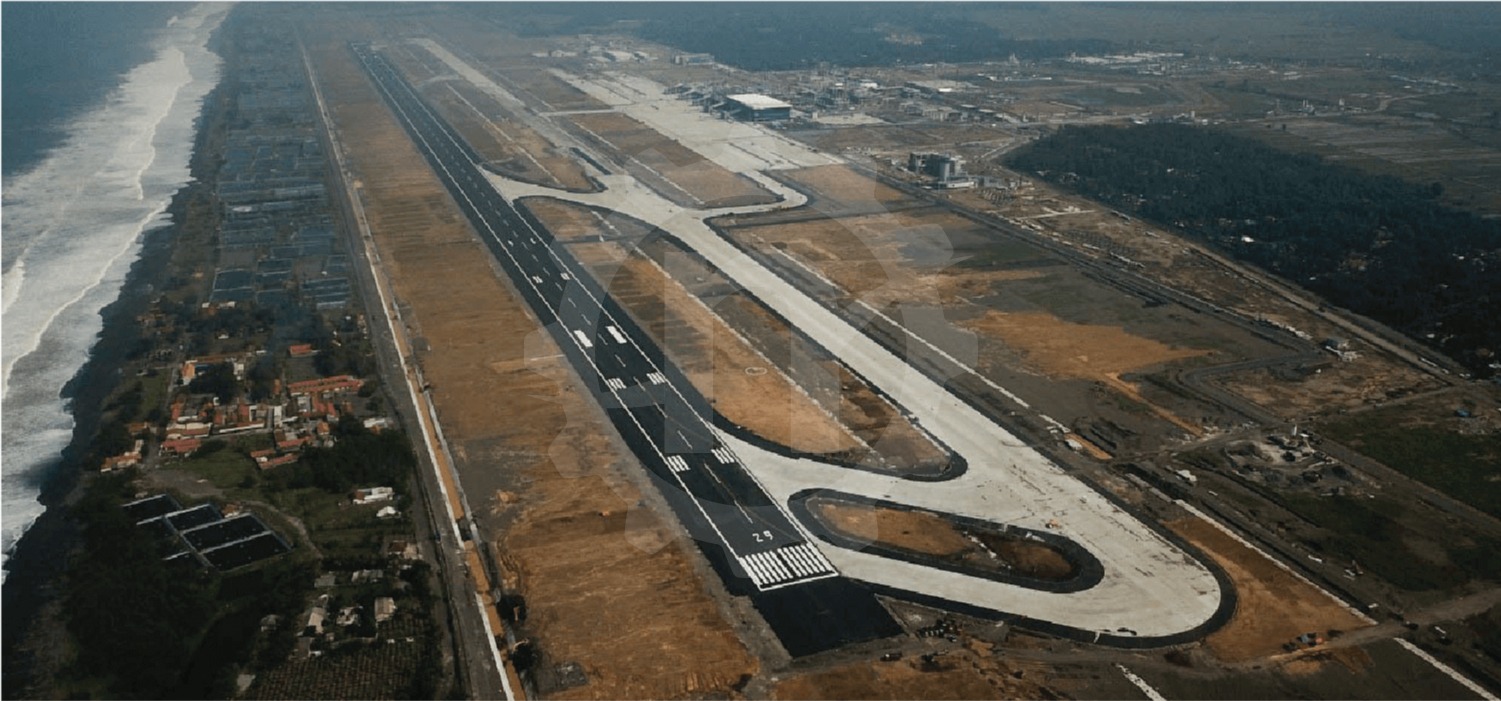BANDUNG - The Yogyakarta International Airport (YIA) development project is a National Strategic Project (PSN). The construction of YIA is recorded in the MURI record as the airport with the fastest operation (reported by muri.org).
The PT. Nur Strait Engineering (NSE)'s role in this YIA development project as the design consultant is to design the airside facilities such as runways, taxiways, aprons, drainage, airfield lighting (AFL), and other facilities. The airside facility design stage was performed in 6 months.
In the early design stage, topographic surveys and aerial photographic surveys of 2,935,000 m² were carried out, bathymetric surveys of up to 5 km, and tidal surveys of 2 points.
In addition, the soil investigation survey consisted of 100 points of deep boring, 100 points of sondir, and 100 points of test pits. Soil sample testing was carried out at the NSE Soil Mechanics laboratory located in Bandung.
The soil investigation results indicate that the location of the YIA airside has the potential for liquefaction to occur, which will impair structures on the ground surface. Selection of soil improvement with the matrix of pros and cons of soil improvement method resulted in dynamic compaction method. The area of the airside soil improvement is ± 900,000 m².
The purpose of dynamic compaction soil improvement is to increase the shear strength of sandy soil so that it can prevent liquefaction when a large earthquake occurs.
Furthermore, the airside pavement with flexible & rigid type is designed to withstand a load of wide-body aircraft up to the Boeing 777 series (MTOW 347 tons).
Drainage planning with a flood return period of 50 years, implemented using PCSWMM software to simulate the tidal effect of the Bogowonto River in the west and the Serang River in the east, which is connected to the sea. The drainage between the runway and the parallel taxiway uses a closed channel that can be passed by PKP-PK vehicles when an emergency occurs.
YIA's airside facility design requires coordination with various parties such as AirNav Indonesia, PT. Pertamina (Persero), the Meteorology, Climatology and Geophysics Agency (BMKG), and the Ministry of Public Works and Public Housing (PUPR). To ensure the suitability of the design with the construction, NSE conducts site visits and offline meetings intensely.
After the physical construction of the YIA airside facility was completed by PT. Pembangunan Perumahan KSO (PP KSO), aircraft operational trials, and first landing trials were carried out by several wide-body aircraft.
According to yogya.inews.id, the first test landing was carried out on April 21, 2019, by a calibration aircraft belonging to the Ministry of Transportation. This trial aims to calibrate and simulate flight landing equipment and check flight communication tools. On October 4, 2019, the Airbus 330-200, a wide-body aircraft with an MTOW of 230 tons belonging to Garuda Indonesia, made its maiden landing at YIA. Also, on October 28, 2020, Garuda Indonesia's wide-body aircraft, the Boeing 777-300ER (MTOW 352 tons), made its first landing at YIA.
Most recently, on March 10, 2021, the Antonov AN 124-100 (MTOW 402 tons) made its first landing at YIA.
This event shows that the YIA airside pavement designed by NSE has proven to accommodate an Antonov AN 124-100 class aircraft, the second-largest cargo aircraft in the world. Reporting from beritasatu.com, the Antonov AN 124-100 aircraft will transport 62 tons of export goods to LCK Columbus, the United States.
